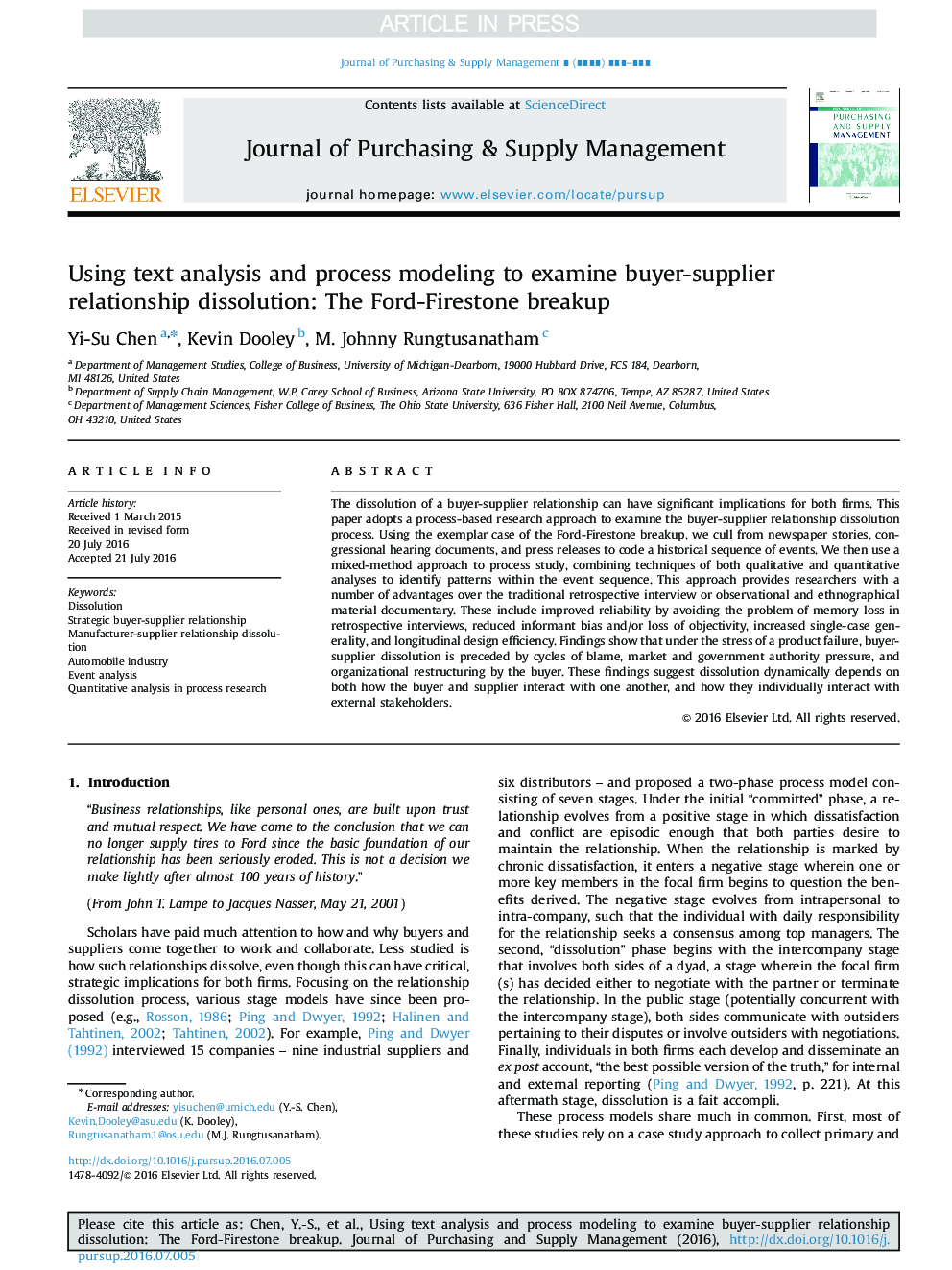| Article ID | Journal | Published Year | Pages | File Type |
|---|---|---|---|---|
| 5110217 | Journal of Purchasing and Supply Management | 2016 | 13 Pages |
Abstract
The dissolution of a buyer-supplier relationship can have significant implications for both firms. This paper adopts a process-based research approach to examine the buyer-supplier relationship dissolution process. Using the exemplar case of the Ford-Firestone breakup, we cull from newspaper stories, congressional hearing documents, and press releases to code a historical sequence of events. We then use a mixed-method approach to process study, combining techniques of both qualitative and quantitative analyses to identify patterns within the event sequence. This approach provides researchers with a number of advantages over the traditional retrospective interview or observational and ethnographical material documentary. These include improved reliability by avoiding the problem of memory loss in retrospective interviews, reduced informant bias and/or loss of objectivity, increased single-case generality, and longitudinal design efficiency. Findings show that under the stress of a product failure, buyer-supplier dissolution is preceded by cycles of blame, market and government authority pressure, and organizational restructuring by the buyer. These findings suggest dissolution dynamically depends on both how the buyer and supplier interact with one another, and how they individually interact with external stakeholders.
Related Topics
Social Sciences and Humanities
Business, Management and Accounting
Business and International Management
Authors
Yi-Su Chen, Kevin Dooley, M. Johnny Rungtusanatham,
